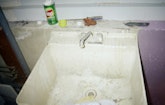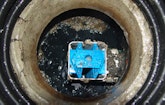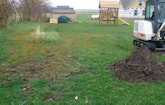
Various factors affect the lifespan of an onsite wastewater treatment system. To better understand the lifespan and what causes malfunctions, some states and drainfield media manufacturers have performed independent investigations.
These studies point to homeowner usage habits, siting, and septic tank function as the most frequent causes. In many instances, the factors affecting drainfield performance are independent of the type of drainfield media.
Drainfield “malfunction” is often defined broadly, going beyond an investigator’s visual observations to include the homeowner’s observations and experiences. To assess the root cause properly and identify a remedy, it is necessary to differentiate between media-related and non-media-related malfunctions.
Manufacturers, regulators, system owners, pumpers, installers, scientists, and engineers, all want to understand why systems malfunction and define best practices for investigating and correcting issues. New technology development is based on these assessments, as are enhanced system designs, installation techniques, and maintenance recommendations.
Roles and responsibilities
Each investigation is unique, and participants vary based on project specifics. Typical participants include:
Regulator. If there is a compliance issue or a notice of violation, the regulatory agency will likely be part of the investigation. The regulator may also need to approve the remedy and so should be present to understand the cause of the malfunction and the rationale for the solution.
Owner. The property owner can provide essential information for determining the source of a malfunction, such as water use habits, number of occupants, and laundering patterns. They also open the home for inspection of the plumbing system and specify the problems encountered.
Pumper. A professional pumper inspects the septic tank to measure scum and sludge levels, inspects the distribution box and drainfield, and may pump the tank and drainfield.
Installer. The installer’s role is to excavate areas suspected as sources of malfunction, including the distribution box and drainfield media. If the tank has infiltrating groundwater, the installer may need to excavate parts of the tank, piping connections or risers to enable repairs.
Soil scientist. A soil scientist may need to evaluate system siting and the drainfield location. The evaluation verifies that the soil type and limiting conditions found during site characterization were accurate and that the drainfield is sized appropriately for the soil type.
Engineer/designer. Based on information gathered about the malfunction, the engineer or designer frequently leads development of the remedy.
Investigation principles
Diagnosing the source of malfunction is the first step in determining the remedy. System usage, siting, and maintenance are often key areas of investigation.
Owner usage habits. The malfunction may result from the owner’s wastewater generation patterns. For instance, if the home operates as a day care center and the drainfield is sized for three bedrooms, the malfunction may be caused by hydraulic overload. Another common source of malfunction is laundering one day a week: A large volume of water reduces residence time in the septic tank, allowing solids to pass through, clogging the soil pore matrix in the drainfield and reducing its hydraulic capacity.
System siting. The drainfield’s position on the property may affect performance. If it is at a topographic low point where runoff collects or the water table is shallow, receives roof runoff, or is seasonally inundated, its hydraulic performance may be compromised.
House plumbing. Leaky plumbing fixtures continuously send water into the onsite system. In such instances, a malfunction can occur because the drainfield is undersized for the excessive flow being discharged. Leaks can be detected by having the homeowner turn all fixtures off and then checking the inlet tee on the septic tank for wastewater flow. If the inlet has no flow, but the outlet is flowing, groundwater infiltration is likely the issue.
Vegetation. Deep-rooted vegetation or plants with an affinity for water near the drainfield may indicate root intrusion into piping or the distribution box. Also, the presence of stressed vegetation at the ground surface may indicate saturated soil or shallow groundwater encumbering drainfield function.
Tank condition. The septic tank may be the cause or a component of drainfield malfunction. Excessive sludge levels can significantly affect tank operation, reducing tank working volume and hydraulic residence time. Excessive sludge accumulation blocking the bottom of the inlet or outlet tee will affect discharge of wastewater into or out of the tank. If sludge obstructs the bottom of the outlet tee, the liquid level will rise to the top of the tee, allowing scum to discharge to the drainfield, possibly clogging the soil pore matrix. Excessive scum accumulation may allow scum to overtop the outlet tee, again discharging solids to the drainfield.
Distribution box. The condition of the distribution box can indicate certain malfunction conditions, including impaired hydraulic capacity and changes in outlet pipe invert elevation.
The presence of excessive solids indicates that the septic tank is not adequately separating solids and liquid and that the soil pore matrix in the drainfield may be clogged. A distribution box that is disturbed during or after installation can change pipe invert elevations, leading to overloading of one or more trenches and impeding flow to others.
Checking drainfield issues
The drainfield media should be exhumed for inspection of the media, infiltrative surface, and underlying soil. This may require pumping of effluent from the media.
Presence of detrimental materials. Solids, oil, and grease discharges to the drainfield media can reduce hydraulic capacity by clogging the soil pore matrix at the infiltrative surface. Effluent is then restricted from exfiltrating from the drainfield. The infiltrative surface should be inspected to identify detrimental materials, which may appear as a thin veneer (as from oil or latex paint discharge), up to a substantial layer that has accumulated over time.
Infiltration through the trench bottom. The investigator should use a shovel to remove a cross-section of the interface between the biomat and soil and visually inspect the biomat/soil contact and underlying soil strata. Where soil under the drainfield has received effluent flow, it is typical to see staining and discoloration, usually gray to black. If there is no discoloration, the soil pore matrix may be clogged.
Soil type. The soil type in the drainfield may have been mischaracterized. For example, if the drainfield is sized for loam, but the soil is silty loam, the drainfield is undersized for the daily design flow. The inspector should compare the soil type identified during soil characterization with the soil type observed to verify proper system sizing. The inspector also should check the design calculations and effluent loading rate in the local regulations to verify that a sizing calculation error has not resulted in an undersized drainfield.
Structural condition. If the media is susceptible to structural failure, the inspector must verify that the media is open along its entire axis and can convey and disperse effluent.
Malfunction remedies
While basic best practices will prevent many malfunction conditions, varied remedies exist for malfunctions that do occur. Of course, each site is different, and no given remedy fits all cases. Any remedy must comply with state and local regulations.
Improper siting. If possible, relocate the system to a higher elevation or raise the system far enough above the water table to allow proper functioning. Divert sources of water such as roof drains, basement sump pump discharges, sprinkler systems, and normal rainfall runoff.
Clogged infiltrative surface. If clogging resulted from solids, grease or oil, the drainfield may have to be expanded or replaced. It is then critical to eliminate future discharge of those substances.
Incorrect soil characterization. Expanding the system to account for the actual site soil conditions will provide the proper capacity.
Malfunctioning septic tank. The tank can be pumped to remove accumulated solids and repaired to eliminate infiltrating groundwater. The effluent filter should be cleaned and piping and distribution box blockages removed. Old tanks may require replacement.
Hydraulic overload. The homeowner should repair leaky fixtures and alter water use habits to spread discharges over time. Sump pump and water softener discharges should be eliminated from the onsite system, and the drainfield can be expanded if there are too many occupants in the home.
Old system/excessive biomat. Installation of an aerobic bacterial generator will reduce biomat accumulation and restore the system’s hydraulic capacity.
Conclusion
A proper inspection can identify the root cause of a malfunction, leading to a remedy that restores the system. Issues like fixture leakage and homeowner water usage habits are simple to address. More challenging remedies involve vertical separation, siting, mischaracterized soil, excessive biomat accumulation, collapsed soil pore networks, and solids and other materials blocking the soil pore matrix.
Many states, municipalities, and manufacturers have embarked on studies to learn more about system malfunctions and to improve the technology and application of onsite treatment. Copies of reports are available at www.infiltratorsystems.com/onsite/links.asp. Moving forward, the industry needs to continue learning how best to prevent malfunction and must further educate system owners and operators on proper care and maintenance.










